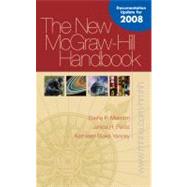
| Writing and Designing Papers | |
| Learning Across the Curriculum | |
| Use Writing to Learn as You Learn to Write | |
| Explore Ways of Learning in a multimedia world | |
| Use strategies for learning when English is your second language | |
| Understanding Assignments | |
| Recognize that writing is a process | |
| Find an appropriate topic | |
| Be clear about the purpose of your assignment | |
| Use the appropriate genre | |
| Ask questions about your audience | |
| Determine the appropriate tone | |
| Meet early to discuss coauthored projects | |
| Gather the tools you need to get started | |
| Planning and Shaping the Whole Essay | |
| Explore your ideas | |
| Decide on a thesis | |
| Plan a structure that suits your assignment | |
| Consider using visuals | |
| Drafting Paragraphs and Thinking about Visuals | |
| Use online tools for drafting | |
| Write focused paragraphs | |
| Write paragraphs that have a clear organization | |
| Develop ideas and use visuals strategically | |
| Integrate visuals effectively | |
| Craft an introduction that establishes your purpose | |
| Conclude by answering "so what?" | |
| Revising and Editing | |
| Get comments from readers | |
| Use online tools for revising | |
| Focus on the purpose of your writing | |
| Make sure you have a strong thesis | |
| Review the structure of your paper as a whole | |
| Revise your essay for paragraph development, paragraph unity, and coherence | |
| Revise visuals | |
| Edit sentences | |
| Proofread carefully before you turn in your paper | |
| Use resources available on your campus, on the Internet, and in your community | |
| Learn from one student’s revisions | |
| Designing and Proofreading Documents and Visuals | |
| Consider audience and purpose when making design decisions | |
| Use the toolbars available in your word-processing program | |
| Think intentionally about design | |
| Compile a print or electronic portfolio that presents your work to your advantage | |
| Common Assignments Across the Curriculum | |
| Reading, Thinking, Writing: the Critical Connection | |
| Recognize that critical reading is a process | |
| Preview the text or visual | |
| Read and record your initial impressions | |
| Reread using annotation and summary to analyze and interpret | |
| Synthesize your observations in a critical response paper | |
| Informative Reports | |
| Understand the assignment | |
| Approach writing an informative report as a process | |
| Know how to write an informative report in the social sciences | |
| Know how to write reviews of the literature | |
| Know how to write informative papers in the sciences | |
| Know how to write lab reports | |
| Informative reports in the humanities | |
| Interpretive Analyses and Writing about Literature | |
| Understand the assignment | |
| Approach writing an interpretive analysis as a process | |
| Learn to write interpretive papers in the humanities | |
| Write a literary interpretation of a poem | |
| Write a literary interpretation of a work of fiction | |
| Write a literary interpretation of a play | |
| Learn to write interpretive papers in the social sciences | |
| Know how to write case studies | |
| Learn to write interpretive papers in the sciences | |
| Arguments | |
| Understand the assignment | |
| Learn how to evaluate an argument | |
| Approach writing your own argument as a process | |
| Arguments in the social sciences | |
| Arguments in the humanities | |
| Arguments in the sciences | |
| Personal essays, Lab Reports, and Case Studies | |
| Understand the assignment | |
| Approach writing a personal essay as a process | |
| Essay Exams | |
| Prepare to take an essay exam | |
| Learn strategies for | |
| Table of Contents provided by Publisher. All Rights Reserved. |
The New copy of this book will include any supplemental materials advertised. Please check the title of the book to determine if it should include any access cards, study guides, lab manuals, CDs, etc.
The Used, Rental and eBook copies of this book are not guaranteed to include any supplemental materials. Typically, only the book itself is included. This is true even if the title states it includes any access cards, study guides, lab manuals, CDs, etc.